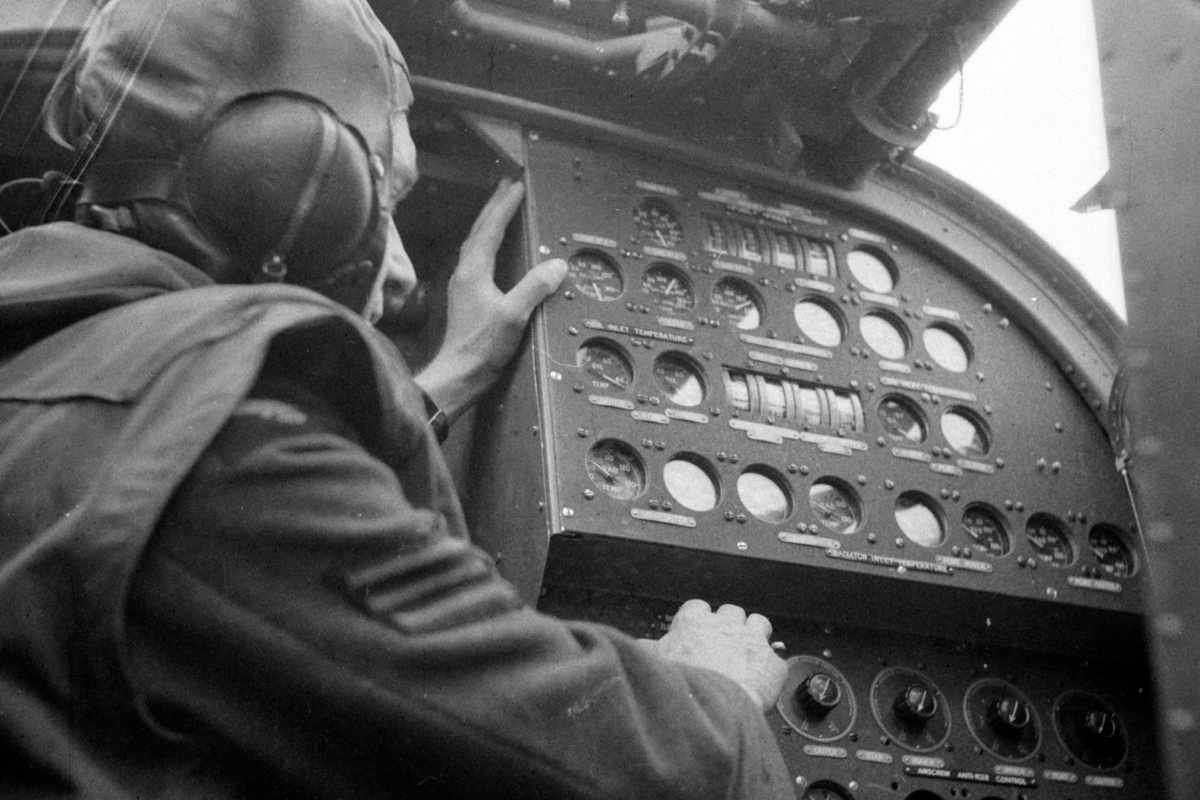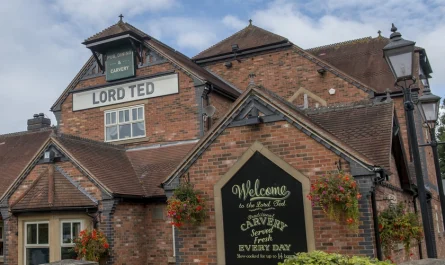Source: https://rafa.org.uk
“Our port inner engine caught fire” Fred Jeacock recounts his experiences as a Flight Engineer during WWII
I took my Flight Engineer course at RAF St Athan in 1943, then was posted to RAF Wombleton where I was crewed up. On our first familiarisation flight we were sent on a long cross-country trip. We climbed to about 15,000 feet then suddenly started to dive down. The aircraft had iced up, and the pilot couldn’t stop the dive so ordered us to bail out. As my parachute opened, the shock jerked my right boot off, and I watched it sail down through the clouds.
A few of us landed near a road and, as we were deciding what to do, a bus came along, so we got on. It was stopped about a mile down the road and the police marched us off – they thought we were enemy parachutists. As a flight engineer, my general duties were to assist the pilot on take-off and landing, and to look after and control – where possible – the fuel usage, hydraulics and any emergency repairs. Also to take over the flying duties should the pilot become disabled.
On one raid to Dortmund in our Halifax Mk III we were on our last leg before the target. Just below us was 10/10 cloud cover, and as I looked down I saw a light – one of our bombers was on fire. Suddenly it exploded, and just as I was thinking ‘I hope they all got out’ the revs on my starboard inner engine shot up to 5,500rpm. I fiddled around with it for a bit and got it under control. I asked the skipper what he wanted me to do about it, and he told me to feather the engine. This shuts off the engine and turns the propeller blades so they’re parallel to the airflow to reduce drag.
We were still fully loaded with bombs and flying at 20,000 feet, but with one engine gone we had about 1,700 horsepower less than we should have. We upped the revs on the other engines to try and keep the aircraft at the right altitude, but by the time we reached the target we had dropped from 20,000 feet to 11,500. We released our bombs, and at the same time the bombs from the main formation above came down all around.
We set a course for home and eventually made it back to England. Our attempts to keep up with the bomber formation meant we’d used up a lot of fuel, and we didn’t have enough to make it back to base at RAF Croft in County Durham. So we requested a direct approach and landing at RAF Marham.
Just as we touched down, our port inner engine caught fire. The extinguisher button was on the other side of the pilot, who was struggling to keep the aircraft straight while we were coming in to land. I reached around him and managed to press the fire extinguisher button and, thankfully, the fire went out.
As well as Dortmund we bombed Kiel, Hamburg and spent a lot of time in the Ruhr in ‘Flak Alley’, over Cologne, Düsseldorf, Essen and others. The worst time was always just waiting by the aircraft for the order to get in and get going. Once you were on the job everything would settle down.

Flight Engineer Fred Jeacock at a Remembrance service in 2019
Fred Jeacock joined the RAF in 1939 as a balloon operator. In 1943 he took the Flight Engineer course and was posted to 431 Squadron. He completed 30 operational flights before becoming an instructor. He was station adjutant at RAF Binbrook and RAF Locking, and retired from the RAF in 1950. Now aged 104, Fred is a member of the Association’s Swansea Branch.



